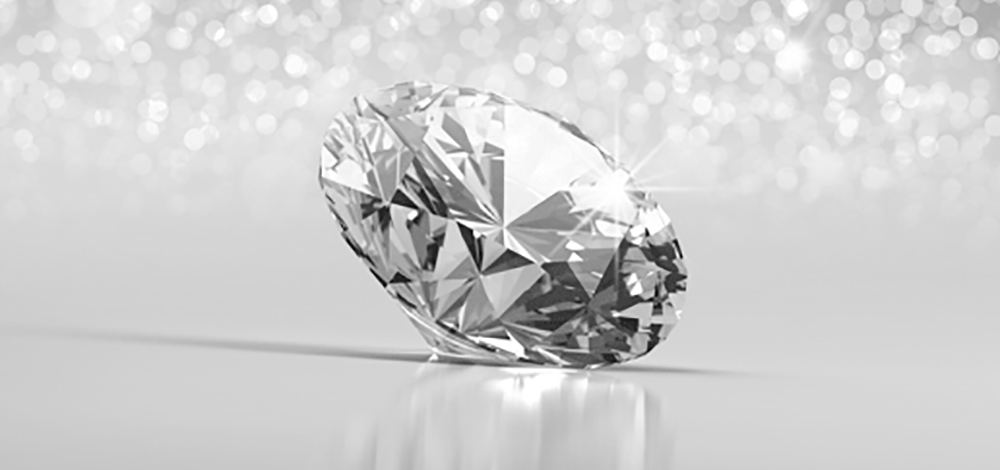
Lab diamonds are grown using technology that mimics the pressure and heat of the natural process that creates diamonds beneath the Earth’s crust. These diamonds are also called man-made diamonds, engineered diamonds, or synthetic diamonds. Whatever you call them, lab-grown diamonds are indistinguishable from naturally-created diamonds since they have the exact same chemical and physical properties.
In 1947, an advertising executive named Frances Gerety was tasked with helping the De Beers diamond company improve sales after the nearly two-decade slump.
The night before presenting her campaign to the client, she realized she had forgotten to come up with a slogan. Exhausted, she scribbled a single line on a sheet of paper and went to sleep.
It would go on to become one of the most successful taglines in the history of marketing. A diamond, produced deep in the earth over the course of a billion years, was made into the perfect symbol of eternal love.
Nearly 75 years later, no engagement seems complete without a sparkling diamond engagement ring. Of the 1.8 million engagement rings sold in the US each year, 1.75 million are diamond rings. Diamond sales in the US averages around $27 billion dollars annually.
Today, consumers have an option unavailable to their parents and grandparents: the lab-created diamond.
While gem-quality lab made diamonds have been around since the 1970s, it's only been in the last few years that they have gained popularity as a less expensive, more environmentally conscious choice.
A short history of lab made diamonds
People have adorned themselves with diamonds for most of recorded history, but it wasn’t until the late 1700s that scientists began to look at what they were and how they were created.
In 1796, English chemist Smithson Tennant decided to explore a theory made by Sir Isaac Newton that diamonds were combustible. Tennant ran a series of experiments, and presented a paper to the Royal Society of London showing that Newton was correct: powdered diamond would catch fire and burn…because diamonds were made of pure carbon.
In theory, this meant that under just the right conditions, a lowly chunk of charcoal could be turned into a diamond. However, it took well over a century to figure out how to create those conditions. Converting carbon into the diamond takes pressure. A lot of pressure.
In the early 1950s, a group of scientists at General Electric was tasked with trying to make lab-created diamonds for industrial use. Called “Project Superpressure,” the scientists ran dozens of experiments using pistons capable of producing phenomenal amounts of steady pressure.
In December 1954 – 157 years almost to the day of Tennant’s first report on the composition of the stone – GE scientists Herbert Strong and H. Tracey Hall produced the world’s first lab-created diamonds.
HPHT and CVD
The process has evolved and refined over the decades, but some of the basic methods developed by Strong and Hall are still in use today. In the high-pressure, high-temperature (HPHT) process, a small piece of natural diamond, called the “seed,” is placed in a specially designed chamber with pure carbon and a catalyst of nickel, iron, or cobalt.
The chamber is heated to almost 3000℉ and put under more than 870,000 pounds of pressure per square inch. This extreme heat and pressure melts the carbon, releasing the carbon atoms into the chamber.
Because the diamond seed is cooler than the metal catalyst, the carbon atoms are naturally drawn to it. Over a period of days or weeks, the atoms crystalize on the seed, and a new diamond is born.
The chemical vapor disposition (CVD) process uses lower heat and less pressure to reach the same result. In CVD, seed crystals are loaded into a chamber filled with a carbon-containing gas and heated to about 2200℉. A microwave beam breaks down the molecules in the gas, freeing the carbon atoms. As in the HPHT process, the carbon gravitates and crystalizes on the seed, creating a new diamond.
The CVD process is more labor-intensive, as the growing diamonds have to be removed from the chambers and polished every few of days to remove any non-diamond carbon deposits. The whole process takes 3-4 weeks.
No matter which process is used, the result is a pure lab-made diamond.
Growth of the market for lab-created diamonds
By 2020, producers were making 6-7 million carats of lab-made diamonds per year. While that represents significant growth since the mid-2000s, it’s still a very small share of the market. Traditional diamond mining produces an average of 100-150 million carats per year.
No matter how they originate, 70% of all diamonds are used for industrial purposes. The exceptional hardness of diamond makes it perfect for cutting, grinding, and drilling.
The remaining 30% ends up in jewelry. More and more companies are utilizing lab made diamonds in their products. In a 2021 survey, 66% of jewelers said they included lab diamonds in their inventories – an increase of 50% over 2016.
In October 2021, jewelry industry analyst Paul Zimnisky reported that the current annual sales of lab-created diamonds was currently around $2 billion annually. He expects this to nearly double to $3.9 billion by 2025.
Why choose a Lab-Created Diamonds at Yadav Diamonds
Yadav Diamonds and Jewelry is one of the few suppliers in the U.S. who provides consumers with the option to purchase lab-created diamonds. We’ve been in the jewelry business for about four decades with a passion to provide the best for our customers. Search for a Lab-Grown diamond using our online tools. Once you find one you like, your Lab-Created diamond can be expertly cut and placed into the high quality setting of your choice. We care for your feelings and the environment and support you with your decision to choose a lab created diamond.
For free consultation contact us at [email protected]
United States: +1 (415) 626-1793 or (888) 968-8810























